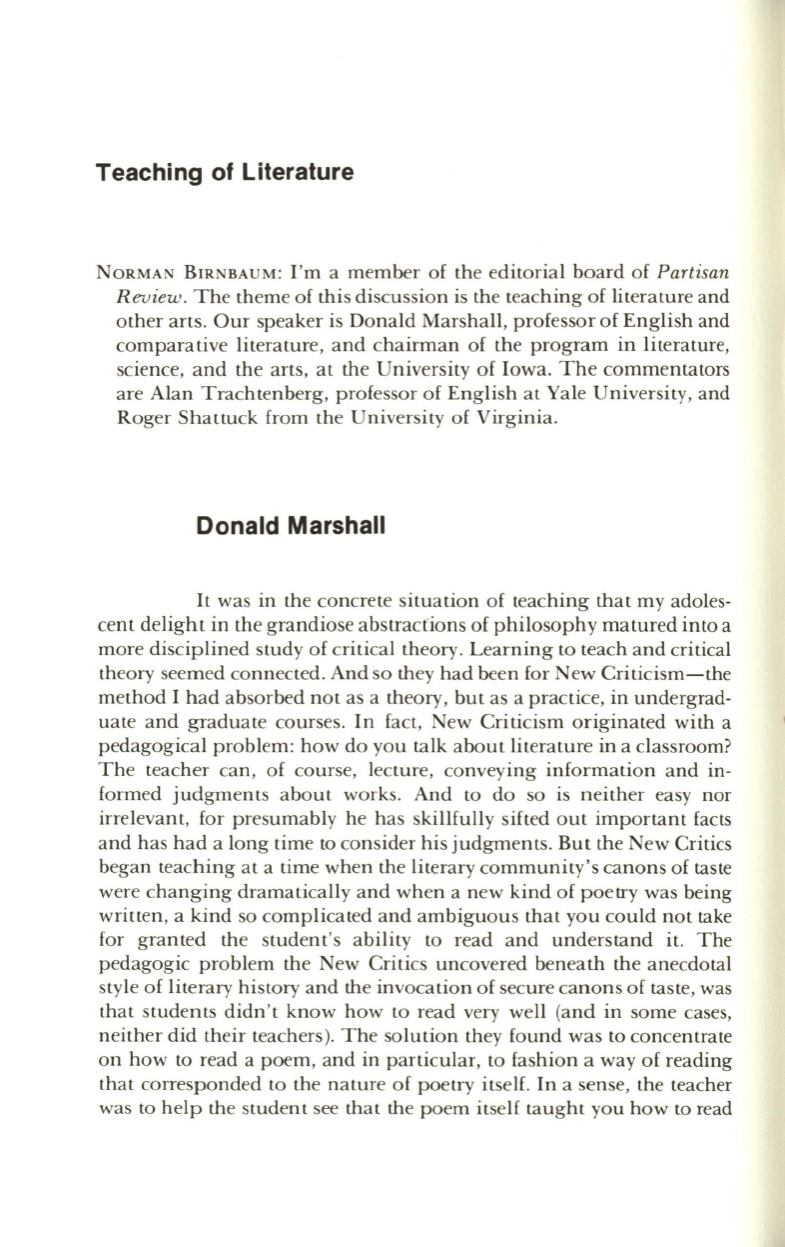
Teaching of Literature
NORMAN BIRNBAUM: I'm a member of the editorial board of
Partisan
Review.
The theme of this discussion is the teaching of literature and
other arts. Our speaker is Donald Marshall, professor of English and
comparative literature, and chairman of the program in literature,
science, and the arts, at the University of Iowa. The commentators
are Alan Trachtenberg, professor of English at Yale University, and
Roger Shattuck from the University of Virginia.
Donald Marshall
It
was in the concrete situation of teaching that my adoles–
cent delight in the grandiose abstractions of philosophy matured into a
more disciplined study of critical theory. Learning to teach and critical
theory seemed connected. And so they had been for New Criticism-the
method I had absorbed not as a theory, but as a practice, in undergrad–
uate and graduate courses.
In
fact, New Criticism originated with a
pedagogical problem: how do you talk about literature in a classroom?
The teacher can, of course, lecture, conveying information and in–
formed judgments about works. And to do so is neither easy nor
irrelevant, for presumably he has skillfully sifted out important facts
and has had a long time to consider his judgments. But the New Critics
began teaching at a time when the literary community'S canons of taste
were changing dramatically and when a new kind of poetry was being
written, a kind so complicated and ambiguous that you could not take
for granted the student's ability
to
read and understand it. The
pedagogic problem the New Critics uncovered beneath the anecdotal
style of literary history and the invocation of secure canons of taste, was
that students didn't know how to read very well (and in some cases,
neither did their teachers). The solution they found was to concentrate
on how to read a poem, and in particular, to fashion a way of reading
that corresponded to the nature of poetry itself.
In
a sense, the teacher
was to help the student see that the poem itself taught you how to read


